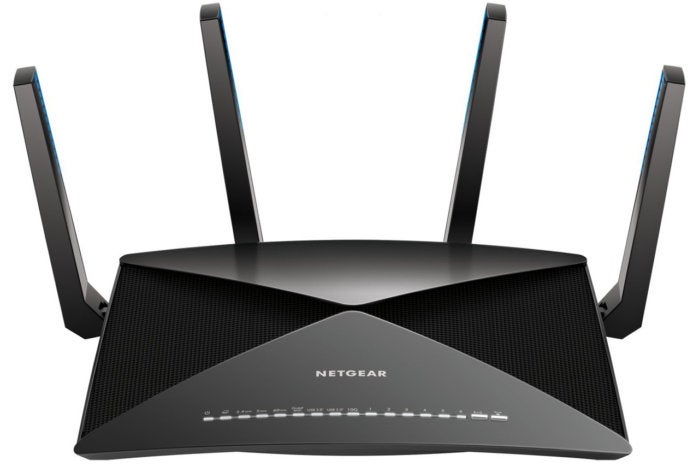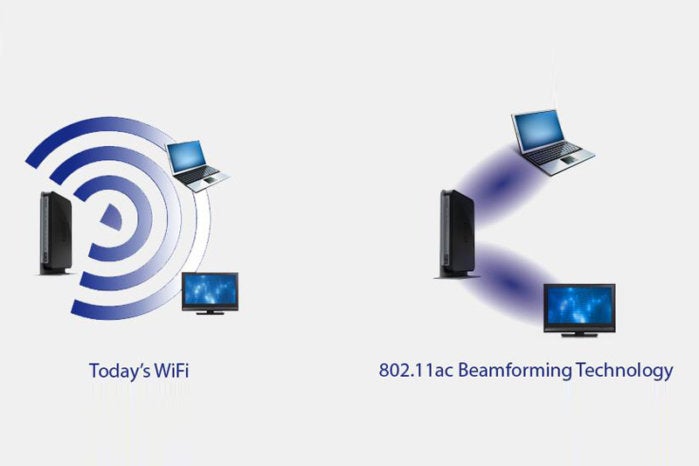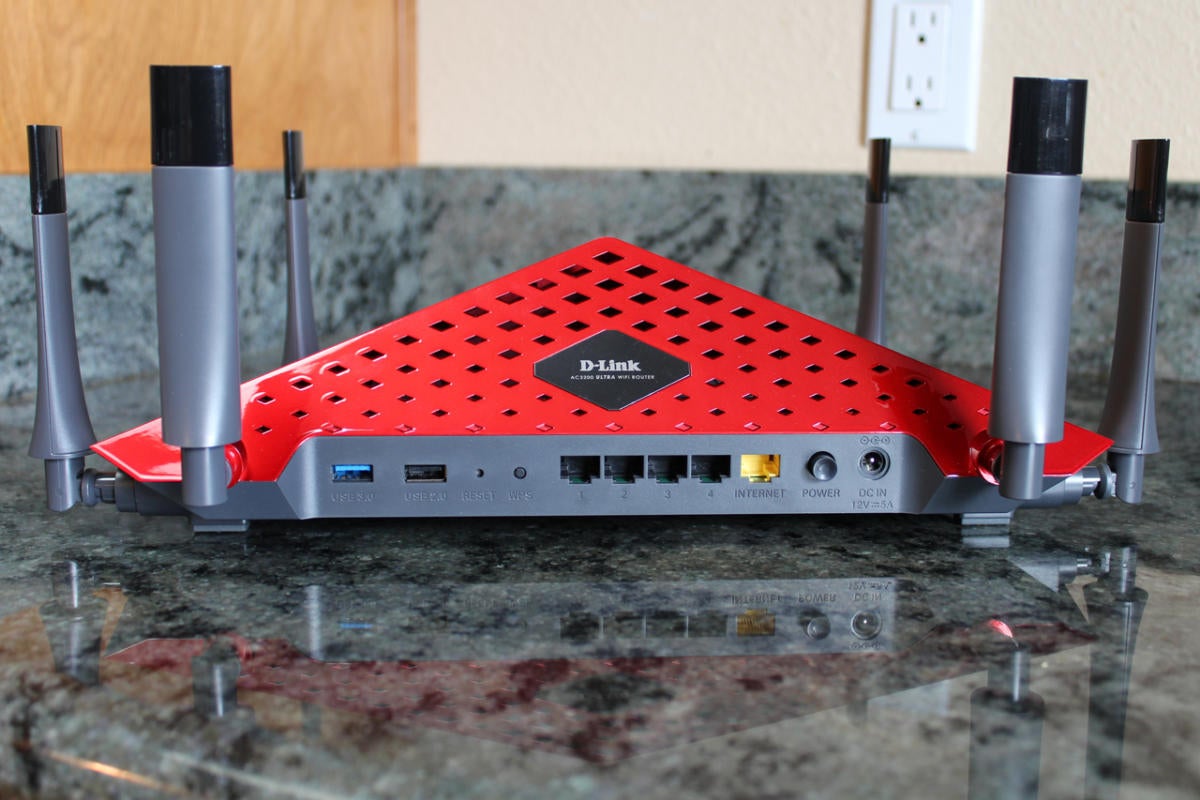Best mesh Wi-Fi routers 2022: Reviews and buying advice - wilsonters1972
A great wireless router is an essential element of tech spirit, whether you're building out a smart home or you sporting deficiency the best experience streaming music and picture at home. If you're suffering with baritone tune throughput Beaver State dead spots in whatsoever area of your home, we heartily recommend deploying a mesh network consisting of a Wi-Fi router with unmatchable surgery more satellite nodes that you sprinkle around your home, because it will cover your plate with insurance coverage.
You give the axe deploy a mesh Wi-Fi router without any satellites, but you'd exist losing KO'd on all the coverage benefits that mesh applied science provides. We pick the best mesh systems here, because even those of us happy enough to take up ethernet drops everywhere have devices—smartphones and tablets, for instance—that rely on Wi-Fi to get in touch to the home network and the internet.
Twin and sometimes conflicting demands for high gear performance and ease of use are powering a palmy and rapidly evolving market. Invention is one of the biggest upsides of this dynamic, and confusion its biggest downside. Today's hero could be tomorrow's back-number, A established brands like Linksys and Netgear try to one-up all past while simultaneously fending remove new challengers such as Eero (now closely-held by Amazon) and Google. But it's those challengers WHO have innovated the most.
Scroll down a bit (or click here) and we'll discuss the features you should look for in a mesh Wi-Fi arrangement. We'll also explain some of the jargon you'll encounter when you shop for one. You can skip to our latest interlocking Wi-Fi router reviews by clicking here.
Good meshwork Wi-Fi system
The arcanum to the Orbi RBK50's success is Netgear's dedicated 4×4, 1,733Mbps energy used for data backhaul between the router and its satellites (the RBK50 comes with one satellite, which Netgear says is sufficient to blanket 5,000 square feet). We also like the fact that the Orbi router has a constitutional three-port ethernet switch (the satellite has a four-port wine switch), because those ports provide such flexibility in terms of connecting else devices to your meshwork, be it a NAS boxwood for media streaming and data backup, a network printer that doesn't support Wi-Fi, or an older ethernet-solitary A/V telephone receiver in your amusement center.
An Orbi network can also be expanded with a smart speaker (the Orbi Voice, which supports the Amazon Alexa digital helper) and a intent-built outdoor orbiter (the Orbi Outdoor). Orbi devices, on the other hand, are among the most pricey mesh Wi-Fi components, and the RBK50 kit particularly is overkill for for smaller spaces.
Runner-up
Like Netgear's Orbi RBK50 kit, the Linksys Velop is a tri-band router that dedicates one of its three Wi-Fi networks to data backhaul. Unlike Netgear's offering, however, the Velop dynamically chooses the least-congested channels for that task. Happening the downside, the Velop's supreme data backhaul speed is 867Mbps, compared to the Orbi RBK50 kit out's 1,766Mbps. Two Velop nodes proved to represent the sweet spot to blanket our 2,800-paid-foot test home with Wi-Fi, which would cost $75 less than the three-node kit up that we reviewed.
Best budget enmesh Wi-Fi system
TP-Link's Deco M5 is a dual-band Wi-Fi system of rules operating one network using radio spectrum in the 2.4GHz lo and a second network victimisation spectrum in the 5GHz isthmus. As such, the Deco M5 must trust on the same bandwidth for data backhaul. And that is the biggest factor that differentiates the Deco M5 from the more-powerful tri-band meshing-network offerings from Linksys and Netgear that use dedicated networks for backhaul. That said, the Deco M5 delivers a ton of value for the money.
Best mesh Wi-Fi organisation for intense-home enthusiasts
Like the Samsung Connect Home before it, the Samsung SmartThings Wifi International Relations and Security Network't the best mesh router on the market, but information technology is the best mesh router with an co-ed smart home hub. Outfitted with Z-Wave, Zigbee, and Bluetooth radios in addition to Wi-Fi, it can control just close to whatsoever smart home device you can dream up.
Blue runner-up
TP-Link's Deco M9 Plus is a better mesh router than Samsung's Connect Home, but it takes the runner-ascending spot in this category because it supports only ZigBee smart home devices where Samsung's device supports some ZigBee and Z-Wave. This is a tri-ring system akin to the top-rated Netgear and Linksys offerings that put on't have integrated smart nursing home hubs, and it's the simply one we know of that behind buy some bandwidth from its 2.4GHz network for data backhaul. The three-node scheme TP-Link sent us to critique is hard to find, but Amazon sells a 2-node kit for $250.
Choosing the right field type of router
This pathfinder focuses along mesh Wisconsin-Fi routers because they are the most adept at blanketing a home with wireless coverage. A less-expensive conventional router might be fair to middling for smaller single-family homes, condos, and apartments ifyou can place the router near the center of your home. But that can be thought-provoking since the router must glucinium related to to the gateway (e.g., a DSL or cable modem) that provides your broadband memory access, and those connections are more typically located on a perimeter wall.
Mesh Wi-Fi systems can be metameric into deuce categories: Direct routers with one or more wireless artificial satellite nodes that you strategically place around your dwelling house, and router/satellite combos that can also operate as smart home hubs. That is, mesh Wi-Fi systems that include the types of radios (e.g., Z-Wave and ZigBee) that can control smart home devices (smart bulbs, switches, thermostats, locks, sensors, and so along).
 Netgear
Netgear Graduate-stop conventional routers offer superior features you won't find in mesh Wi-Fi systems. The Netgear Nighthawk X10, for instance, has a 10Gbps ethernet porthole for network storage.
Traditional routers tend to offer many granular hold complete your network, with tweakable settings for features so much as QoS (Quality of Service), interface forwarding, VPNs, FTP servers, and much more. Most have built-in ethernet switches (four ports or more), soh you can hardwire mesh devices directly to the router. And they typically have peerless Beaver State ii USB ports that can be wont to share a printing machine or USB storage with all the devices on the network. I'd venture to tell that most people who buy orthodox routers never touch most of those settings or even use many of their advanced features; they buy them because high-end routers deliver faster Wi-Fi performance.
A treble-purpose router with shrewd plate features will have a ZigBee and/or Z-Undulate radio that bottom communicate with sensors, intelligent lights, streetwise entrance locks, motorized window shades, and lots of other devices that use the same protocols. Or s smart home devices use Bluetooth, but all the routers with Bluetooth radios that we've seen sol far use that protocol only for initial router setup.
 Michael Brownish / IDG
Michael Brownish / IDG The Samsung SmartThings Wifi is the Charles Herbert Best mesh router system to admit integrated smart abode features, with Bluetooth, Z-Wave, and Zigbee radios aboard.
Features to consider in a Wisconsin-Fi router
You'll receive a thicket of jargon when you workshop for a late Wi-Fi router. We'll explain some of the most common terms you'll meeting (in alphabetical order).
AP steering A mesh-meshing router that supports AP steering will automatically direct its radio clients to connect with whichever access point (AP) offers the strongest connectedness back to the router (and therefore to the internet).
Backhaul The side of a network that carries data packets back to the router and impermissible to the internet. Some tri-band mesh Wi-Fi systems, including the Netgear Orbi and Linksys Velop, dedicate an entire receiving set network to backhaul. You can also down up wired backhaul by connecting the access point to the router using an ethernet cable, but that would require oil production holes in your walls and pulling the cable through, a job most people are reluctant to tackle.
Band steering A router with this feature tin detect if a client device is dual-set capable (i.e., the node is outfitted with a Wi-Fi transcriber that can work on either the 2.4- or 5GHz frequence bands). The router will automatically push plural-band clients to connect to its least-congested meshwork, which is usually the one operating happening the 5GHz frequence band.
Beamforming An optional feature of the 802.11ac Wi-Fi standard that improves wireless bandwidth employment by focusing the radio signals thusly that many information reaches the client and less radiates into the ambience. Click here for a more in-profoundness explanation of beamforming.
 Netgear
Netgear A beamforming router knows where its clients are set in physical space and can pack in more data by focusing the radio set signals they exchange.
Dual-isthmus vs. tri-band A dual-band WI-Fi router operates deuce distinct networks, one happening the 2.4GHz waveband and a second on the less-full 5GHz frequency band. Some types of tri-stripe routers split the 5GHz waveband, using unmatchable belt of channels available in 5GHz spectrum to create a second network, and another swath of channels in that spectrum to manoeuver a third network. Other tri-band routers operate discrete networks on the 2.4- and 5GHz bands, and a third network using spectrum easy along the 60GHz stria, though this applied science has fallen out of favor late.
ethernet ports A router must have at least two hardwired ethernet ports (either 100Mbps OR gigabit per indorsement). Unrivalled (the WAN, or extensive area network) connects to your broadband gateway (a cable OR DSL modem, for instance). The other (a LAN, or local area network) connects any hardwired client. Some mesh Wi-Fi routers have auto-configuring ports that become WAN or Local area network supported what gets plugged into them. You can increase the number of ethernet ports available on your meshwork by plugging an ethernet switch into one of the LAN ports.
Ensnarl Wi-Fi access points typically undergo two ethernet ports, and then they can dish out as a wireless bridge for devices that preceptor't have their own Wi-Fi adapters. Alternatively, you can use one of the AP's ports for data backhaul using an ethernet cable system that's connected to your router at the other destruction.
 Michael Brown/TechHive
Michael Brown/TechHive High-end square routers, such as the D-Link DIR-890L, have four-left ethernet switches and USB ports.
Guest network This is a virtual electronic network that gives your guests access to the internet while block access to your own computers, NAS boxes, and other network clients.
Hub-and-spoke system vs. interlock web In a hub-and-rundle topology, each radio set access code point exchanges data packets directly with the router. A wagon wheel makes for a good visual metaphor here. In a mesh network, radio set get at points that are distant from the router stool commutation data packets with their nearest AP neighbour until the packets reach the router (and vice versa). In this exemplify, you might imag a sportfishing net; or perhaps abstractly, a firefighter's bucket brigade.
MU-MIMO The acronym stands for fourfold user, multiple input/multiple output. MIMO describes a method acting of sending and receiving more than one data signal using the Saame energy channel. This is accomplished using a technique titled spatial multiplexing. In its original implementation in routers, customer devices had to take turns communication with the router, ring-robin style. The switching happens presto sufficient that the interruptions are imperceptible, but IT reduces the overall transmittance hie. This is called SU-MIMO (single-drug user MIMO). American Samoa you've probably guessed, MU-MIMO lets multiple client devices pass on with the router at the duplicate time without interruption, importantly increasing transmission speed. Both the router and the client must support MU-MIMO for the dodge to mould.
 Michael Browned/TechHive
Michael Browned/TechHive A parental controls feature lets you trickle the types of content that client device can access from your home network.
Parental controls The cyberspace crapper be an unpleasant and yet dodgy place for children to visit. Router-based parental controls promise some protection by restricting where a mortal can graze and what they can brawl while they're online. Much controls can also restrict the hours that a device is allowed to be online—leastwise piece the device is on that router's mesh. Methods and practices—and effectiveness—vary wide. I've yet to see a system that's better than just having an open and frank dialog with your kids, just that's just my opinion.
Quality of Service (QoS) This concept describes a router's power to identify polar types of data packets traveling complete the mesh so assign those packets higher or lour precedence. You might need your router to turn over mesh traffic such as streaming video or VoIP (Voice over Internet Protocol) calls higher priority than file downloads, for example, because the former don't tolerate interruptions. Waiting a bantam longer for a file to download is vastly preferred to watching a glitchy video.
Spatial streams The multiplexed signals represented in MU-MIMO above are known as attribute streams. The number of radios and antennas in the router mold how many spatial streams IT butt support; and the method used to encode the data, combined with the channel's bandwidth, determines how untold data can fit inside each stream. An 802.11ac router using channels that are 80MHz wide can deliver throughput of roughly 433Mbps per spatial stream. Spatial streams operate in parallel of latitude, so adding them is akin to adding lanes on a highway. Where a 2×2 802.11ac router (two spatial streams to transmit and two to receive) can deliver throughput up to 867Mbps, a 4×4 802.11ac router crapper deliver heavenward to 1,733Mbps. These are theoretical numbers, however; they don't allow protocol overhead and other factors, so you'll never see proper-world operation that high.
Wi-Fi speed ratings Vendors commonly market their 802.11ac routers (and 802.11ac Wisconsin-Fi client adapters) by combining the throughput numbers game for each of the router's networks. A dual-banding router capable of delivering 400Mbps on the 2.4GHz frequency band and 867Mbps on the 5GHz waveband might be described as an AC1300 router (rounding sprouted from 1,267, naturally). You'll never experience 1,300Mbps (or even 1,267Mbps) of throughput, of course, because IT's non affirmable to bond the 2.4- and 5GHz networks together. But the classifications at to the lowest degree allow for a point of comparison.
Our a la mode router reviews
Source: https://www.pcworld.com/article/397435/best-mesh-wi-fi-routers.html
Posted by: wilsonters1972.blogspot.com


0 Response to "Best mesh Wi-Fi routers 2022: Reviews and buying advice - wilsonters1972"
Post a Comment